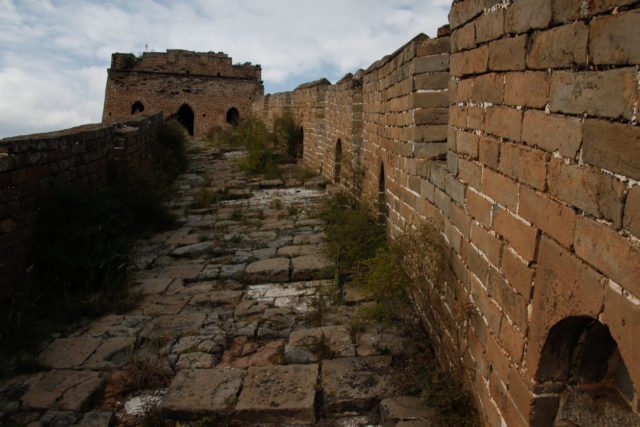The Great Wall of China stretches along the historical northern borders of the ancient Chinese states and Imperial China. It was constructed as a series of fortifications to protect against various nomadic groups from the Eurasian Steppe.
Today, the defensive system of the Great Wall is recognized as one of the most impressive architectural achievements in history. However, the wall has not been completely preserved to this day, and only some sections are still standing.

Some sections of the wall date from the 7th century BC. In that era, a series of individual fortifications were joined up to make a more robust line of defense. Over time, watchtowers, barracks, and garrison stations were added all along the wall’s length. The most famous parts of the wall were those built by the Ming Dynasty from 1368 to 1644 to the north of Beijing.
The ancient Chinese structure was created not only for defense but also for border control to regulate trade, impose taxes, and control immigration and emigration.

North of Beijing and near the main tourist centers, the wall is in good condition and is even periodically renovated. But unfortunately, in many other places, the wall has become very dilapidated over time. This is seen as a serious problem in the preservation of the world’s cultural heritage.
Sadly, the Wall is subject not only to natural erosion by weather and vegetation, but it has also been damaged by people who either leave graffiti or take ancient bricks as a souvenir or to sell to others.

A 2012 report stated that 22% of the Great Ming Wall has disappeared. The total amount of wall that has gone through vandalism or erosion was estimated to be about 1,219 miles. It was also estimated that another 37 miles of wall in the Gansu province would likely disappear in the next two decades due to erosion caused by sandstorms.
It didn’t help that, in the 1970s, stones began to disappear from the wall when officials encouraged poor local residents to use thick bricks from the wall to build their own homes and roads. In addition, locals began selling slabs engraved with Chinese characters.
The job of saving the wall is proving to be quite a challenge for the Chinese government. Various regulations were introduced to protect and maintain the huge wall, including a fine of up to ¥ 5,000 for anyone who removes any stones. However, there is no organization set to monitor such crimes or enforce the penalties. Instead, local residents are lending a hand.

The village of Jielingkou is not far from the eastern end of the Great Wall. During the Ming Dynasty, that section of the wall was a strategic point and garrisoned by soldiers. Today, it is a small farming community, and the locals patrol the wall, reporting to the authorities any sections that might be at risk of collapse, as well as any tourists who might have taken away souvenirs.
Local resident Qiao Guohua gets paid a symbolic sum of $150 a year by the local government, but he patrols because he feels strongly about the cultural heritage of the wall. He still remembers how tall the structure was when he was a child, before people were encouraged to use parts of it to build their own homes.
Some parts of the wall to the west were constructed of mud-brick, a construction material consisting of loam, mud, sand, and water. Sections made of this type of brick are more prone to erosion than those made with stone.

However, when efforts were made to repair part of the wall with a layer of concrete, the work was heavily criticized. The vice president of the Great Wall of China Society, Dong Yaohui, is reported as saying that “although the local government was well-intentioned,” the work was done “very badly” and that “it damaged the original look of the Great Wall and took away the history from the people.”
Yaohui is one of three people who walked the length of the Ming section of the wall in the 1980s, taking 500 days to document its condition as well as the communities along it. Today, Yaohui encourages others to follow in his footsteps and explore all areas of the wall.

However, it’s tough-going with the heat and steep inclines. Some visitors have reported needing to move on all-fours along some particularly rocky inclines. In 2010, one section of the wall between Jinshanling and Simatai, which was regularly explored by tourists, was closed for security reasons. Its condition is shown in some of these photos.
Today, some parts of the wall have been rebuilt and some have completely disappeared. But many are still in disrepair. Yaohui would like to attract companies and individuals to sponsor sections of the wall because some of the local governments are too poor to maintain the section of the wall in their area. Sponsorship money would pay for repairs and patrols.


Another Article From Us: Teriberka Abandoned Village – the Edge of Russia

